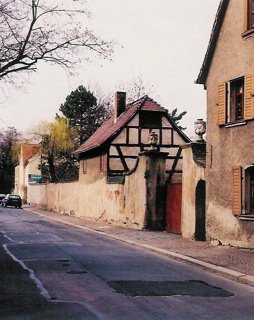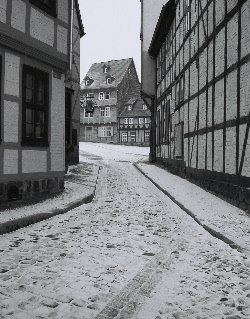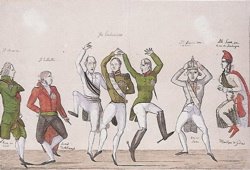

 In 1908, Hermann Minkowski gave a lecture in Cologne on the world-view his former student, Albert Einstein, was implicating by his special theory of relativity, published three years earlier. Minkowski began the lecture with the proclamation that, “Henceforth space by itself, and time by itself, are doomed to fade away into mere shadows, and only a kind of union of the two will preserve an independent reality.”
In 1908, Hermann Minkowski gave a lecture in Cologne on the world-view his former student, Albert Einstein, was implicating by his special theory of relativity, published three years earlier. Minkowski began the lecture with the proclamation that, “Henceforth space by itself, and time by itself, are doomed to fade away into mere shadows, and only a kind of union of the two will preserve an independent reality.” Today's opening of 'Der Zeitraum' at Galerie Eigen + Art Leipzig attests that the paintings of Neo Rauch have moved full force into just such an independent reality. Surrounded by friends and family on a day with the first hint of autumn in the air, the artist could not have chosen a more germane moment in which to solidify themes he has been patiently moving toward for several years. Neo’s show at David Zwirner/New York last year gave clear indication that the artist was leaving behind the social realist iconography of the GDR - imagery that had made him a household name in the global art market - finding his own private Idaho within a more expansive landscape of memory.
In the March 2001 issue of ArtForum, Daniel Birnbaum wrote of Neo’s work at the time, "This is a weirdly concrete dream of production, athletic strength, and socialist modernity dreamed in a time and a place that no longer exists." That was then; this is now. As the exhibition title implies, ‘Der Zeitraum’ suggests a moment in space and time that very much exists, eternally and universally, a time in which past, present and future both co-exist and are carried concurrently with the temporal experience of the everyday.
That’s not to say these monumental paintings don’t establish location (Ortung); they do and that place is very much Neo’s native Saxony. The landscape of memory this implies is therefore one ensconced in the landscape of eastern Germany, but with the passing of years it is no longer one so focused on the recent experience of the GDR, which, as Birnbaum rightly suggests, doesn’t exist any longer. Rather, Neo’s canvases now embrace a comprehensive landscape, encapsulating the history and experience of modernity itself.
Where and when the modern era began may be open to debate, but there is little doubt it was in full swing by the close of the Napoleonic Wars. Here Leipzig holds unique memory, as host and victim of the single bloodiest struggle in European history prior to the First World War – the Battle of Leipzig (1813). This birth of the modern era from the very blood of Leipzigers is uppermost in the city’s collective memory and recurrent in Neo's imagery of Napoleonic-era figures in recent paintings such as ‘Neujahr’ and ‘Schmerz’ (shown at Zwirner).
As a pinnacle of modern thinking, Einstein’s special theory debunked Newtonian notions of fixed space and time in its conclusion that the perception of space and time differ according to the unique position of the observer. With ‘Der Zeitraum’, Neo Rauch has made a bold, elegant and decisive argument that our perception of modernity likewise hinges on the unique perspective collective memory affords the viewer.
To give Neo the last word, "Some people... detect Americanism in my work; others think it's Far Eastern; and only the spiteful fellow painter who lives in the next village recognizes my paintings to be nothing other than the same provincial manure he has in front of his own nose."
Pictured:
1. by the author, 'Russenstraße', Leipzig, 2006, colour photograph.
2. Johann Dieter Wassmann, 'Quedlinburg', 1895, albumen silver print.
3. artist unknown, 'Le Congrés' (The Congress of Vienna), 1815, colour etching.
9 September 2006 through 22 December 2006
Galerie Eigen + Art
Spinnereistraße 7, Halle 5 D-04179 Leipzig
Opening hours: Tuesday through Saturday: 11:00 - 18:00

No comments:
Post a Comment